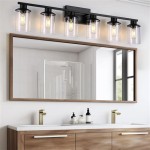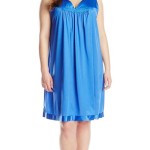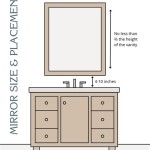Floating Bathroom Vanity 72 Inch: A Comprehensive Guide
The 72-inch floating bathroom vanity has emerged as a popular choice for homeowners seeking to combine aesthetics with functionality in their bathroom renovations. This particular size offers ample storage space while maintaining a modern and streamlined appearance. The term "floating" refers to the vanity being mounted to the wall, leaving the floor space beneath it exposed. This design element contributes to an open and airy feel, making it particularly suitable for both large and small bathrooms. This comprehensive guide will delve into the key considerations when selecting and installing a 72-inch floating bathroom vanity, focusing on design, materials, installation, and maintenance.
Key Point 1: Design Considerations and Aesthetic Appeal
The design of a 72-inch floating bathroom vanity encompasses various factors that influence the overall aesthetic of the bathroom. Understanding these elements is crucial in choosing a vanity that complements the existing decor and meets the specific needs of the user.
Style: Floating vanities are available in a range of styles, from minimalist and contemporary to traditional and rustic. A minimalist vanity typically features clean lines, a lack of ornamentation, and a focus on functionality. Contemporary styles may incorporate bold colors, geometric shapes, and innovative materials. Traditional vanities often include intricate detailing, raised panel doors, and ornate hardware. Rustic styles emphasize natural materials, such as reclaimed wood, and may feature distressed finishes. The selection of a style should align with the overall design theme of the bathroom to create a cohesive and harmonious look.
Color and Finish: The color and finish of the vanity significantly impact the visual appeal of the bathroom. White and light-colored vanities are commonly chosen for their ability to brighten the space and create a sense of openness. Darker colors, such as black or gray, offer a more dramatic and sophisticated look. Wood finishes, whether natural or stained, add warmth and texture to the bathroom. The finish should be durable and resistant to moisture, as the bathroom environment is prone to humidity and spills. Common finishes include lacquer, varnish, and polyurethane, each offering varying levels of protection and aesthetic qualities. The selection of a color and finish should consider the existing color palette of the bathroom, including the wall color, tile, and other fixtures.
Countertop Material: The countertop is a prominent feature of the vanity and should be chosen carefully based on both aesthetics and functionality. Popular countertop materials include quartz, granite, marble, and solid surface options. Quartz is known for its durability, resistance to stains and scratches, and wide range of color options. Granite offers a natural stone appearance and is also highly durable. Marble is a luxurious option that provides a classic and elegant look, but it is more porous and requires regular sealing to prevent staining. Solid surface materials, such as acrylic or polyester blends, are non-porous, easy to clean, and available in various colors and patterns. The choice of countertop material should consider the budget, desired aesthetic, and level of maintenance required.
Hardware: The hardware, including knobs, pulls, and faucets, can significantly enhance the overall design of the vanity. Hardware should be selected to complement the style and finish of the vanity. For example, sleek and modern hardware would be appropriate for a contemporary vanity, while ornate hardware would be more suitable for a traditional vanity. The finish of the hardware should also be considered, with options such as chrome, brushed nickel, oil-rubbed bronze, and matte black. The functionality of the hardware is equally important, ensuring that it is comfortable to grip and operate. The choice of hardware should contribute to the overall aesthetic coherence of the bathroom.
Storage Options: The 72-inch size offers considerable storage capacity, allowing for various configurations of drawers, cabinets, and open shelving. The storage needs of the user should be carefully considered when selecting a vanity. Drawers are ideal for storing smaller items, such as toiletries and personal care products, while cabinets are suitable for larger items, such as towels and cleaning supplies. Open shelving can be used to display decorative items or store frequently used items. The internal organization of the drawers and cabinets can also be customized to maximize storage efficiency. Options include drawer dividers, pull-out shelves, and adjustable shelving. The arrangement of storage should be tailored to the specific needs and preferences of the user.
Key Point 2: Material Selection and Durability
The materials used in the construction of a 72-inch floating bathroom vanity directly impact its durability, longevity, and resistance to moisture. Selecting high-quality materials is essential for ensuring that the vanity withstands the demands of the bathroom environment.
Cabinet Material: The cabinet, or frame, of the vanity is typically constructed from wood, plywood, MDF (Medium-Density Fiberboard), or particleboard. Solid wood is the most durable option, but it is also the most expensive. Plywood offers a good balance of durability and affordability, and it is less prone to warping than solid wood. MDF is a cost-effective option that is smooth and easy to paint, but it is less resistant to moisture than solid wood or plywood. Particleboard is the least expensive option, but it is also the least durable and most susceptible to water damage. The choice of cabinet material should consider the budget and the expected level of exposure to moisture. If particleboard or MDF is used, it is crucial to ensure that it is properly sealed to prevent water damage.
Finish Durability: The finish of the vanity protects the cabinet material from moisture and wear. Common finishes include lacquer, varnish, and polyurethane. Lacquer provides a hard, durable finish that is resistant to scratches and stains. Varnish offers a more traditional look and is also relatively durable. Polyurethane is highly water-resistant and provides excellent protection against moisture. The finish should be applied evenly and thoroughly to ensure optimal protection. It is also important to choose a finish that is compatible with the cabinet material. For example, some finishes may not adhere well to MDF or particleboard. The durability of the finish should be a key consideration when selecting a vanity, as it directly impacts its longevity.
Hardware Quality: The quality of the hardware, including hinges, drawer slides, and handles, affects the smooth operation and overall durability of the vanity. High-quality hardware components are typically made from solid metal, such as stainless steel or brass. Avoid hardware made from plastic or thin metal, as these materials are prone to breakage. Soft-close hinges and drawer slides are desirable features that prevent slamming and extend the lifespan of the hardware. The hardware should be properly installed and adjusted to ensure smooth and reliable operation. The investment in high-quality hardware is worthwhile, as it contributes to the long-term performance and durability of the vanity.
Moisture Resistance: Given the high humidity levels in bathrooms, moisture resistance is a critical consideration when selecting a vanity. Choose materials that are inherently resistant to moisture, such as solid wood or plywood sealed with a waterproof finish. Avoid using materials that are highly absorbent, such as particleboard, unless they are properly sealed and protected. Ensure that all seams and joints are sealed with caulk to prevent water from penetrating the cabinet. Proper ventilation in the bathroom can also help to reduce humidity levels and prevent moisture damage. Regularly inspect the vanity for signs of water damage, such as swelling or discoloration, and address any issues promptly. Taking these precautions can help to extend the lifespan of the vanity and prevent costly repairs.
Countertop Considerations for Durability: Different Countertop materials will offer different levels of durability. For example, quartz countertops are incredibly durable and resist scratching and staining, which is ideal for a bathroom environment. Granite is another durable option, but may require sealing to prevent staining from spills. Marble countertops are beautiful but more porous and require more maintenance to prevent staining and etching. Solid surface countertops are non-porous and easy to clean, making them a hygienic and durable choice. When choosing a countertop, consider daily usage, maintenance requirements, and the likelihood of spills or exposure to corrosive materials.
Key Point 3: Installation and Mounting Considerations
The installation of a 72-inch floating bathroom vanity requires careful planning and execution to ensure that it is securely mounted and functions properly. Professional installation is often recommended, but experienced DIYers can tackle the project with the right tools and knowledge.
Wall Preparation: The wall to which the vanity will be mounted must be structurally sound and capable of supporting the weight of the vanity and its contents. Locate the wall studs using a stud finder and mark their positions. The vanity should be securely anchored to the studs to provide adequate support. If the studs are not in the ideal location, consider adding horizontal blocking between the studs to provide additional support. Ensure that the wall is level and smooth before installing the vanity. Repair any damage, such as cracks or holes, and apply a fresh coat of paint or wallpaper if necessary. Proper wall preparation is essential for a successful and secure installation.
Mounting Height: The standard mounting height for a bathroom vanity is typically 34 to 36 inches from the floor to the top of the countertop. However, the optimal mounting height may vary depending on the height of the users and their personal preferences. Consider the ergonomics of the vanity and ensure that it is comfortable to use for all members of the household. Use a level to ensure that the vanity is mounted straight and that the countertop is level. A slight adjustment in mounting height may be necessary to accommodate any unevenness in the floor.
Plumbing Connections: Before installing the vanity, ensure that the plumbing connections for the sink and faucet are properly located and accessible. Turn off the water supply to the bathroom and disconnect the existing plumbing fixtures. Install new shut-off valves if necessary. Connect the drain pipes and supply lines to the new vanity, ensuring that all connections are tight and leak-free. Use Teflon tape or pipe dope to seal the threaded connections. Test the plumbing for leaks after installation. It is recommended to consult with a licensed plumber if you are not comfortable working with plumbing.
Electrical Considerations: If the vanity includes electrical components, such as lighting or outlets, ensure that the wiring is properly installed and meets all applicable electrical codes. Turn off the power to the bathroom before working with electrical wiring. Connect the electrical wiring to the vanity, ensuring that all connections are secure and properly insulated. Use wire connectors and electrical tape to protect the connections. Test the electrical components after installation. It is recommended to consult with a licensed electrician if you are not comfortable working with electrical wiring.
Securing the Vanity: Secure the vanity to the wall using appropriate mounting hardware, such as lag bolts or heavy-duty screws. Ensure that the hardware is long enough to penetrate the wall studs and provide adequate support. Use a level to ensure that the vanity is mounted straight and that the countertop is level. Tighten the mounting hardware securely. Inspect the vanity after installation to ensure that it is stable and does not wobble. If necessary, add shims to level the vanity and provide additional support. Proper mounting is essential for the safety and stability of the vanity.

Jacob 72 Inch Floating Vanity

Eviva Axis 72 Inch White Oak Double Sink Bathroom Vanity

Royce 72 Double Vanity In Chestnut With 3 Cm White Zeus Quartz Top

Exton 72 Inch Oak Console Floating Vanity

James In Vanities Marcello 72 Double Vanity Chestnut Ethereal Noctis Quartz

James In Vanities Lau 72 Double Vanity Light Natural Oak W 3 Cm Top White Zeus

Mia 72 Inch Oak Console Floating Vanity With Vessel Sink White

Totti Wave 72 Modern Double Sink Bathroom Vanity Espresso

Mia 72 Inch Floating Vanity With Square Undermount Sink Light Oak White Quartz By Randolph Morris Rmv50 72lo Sqwh

Leuven Floating Vanity Solid Wood 36 72 O N







